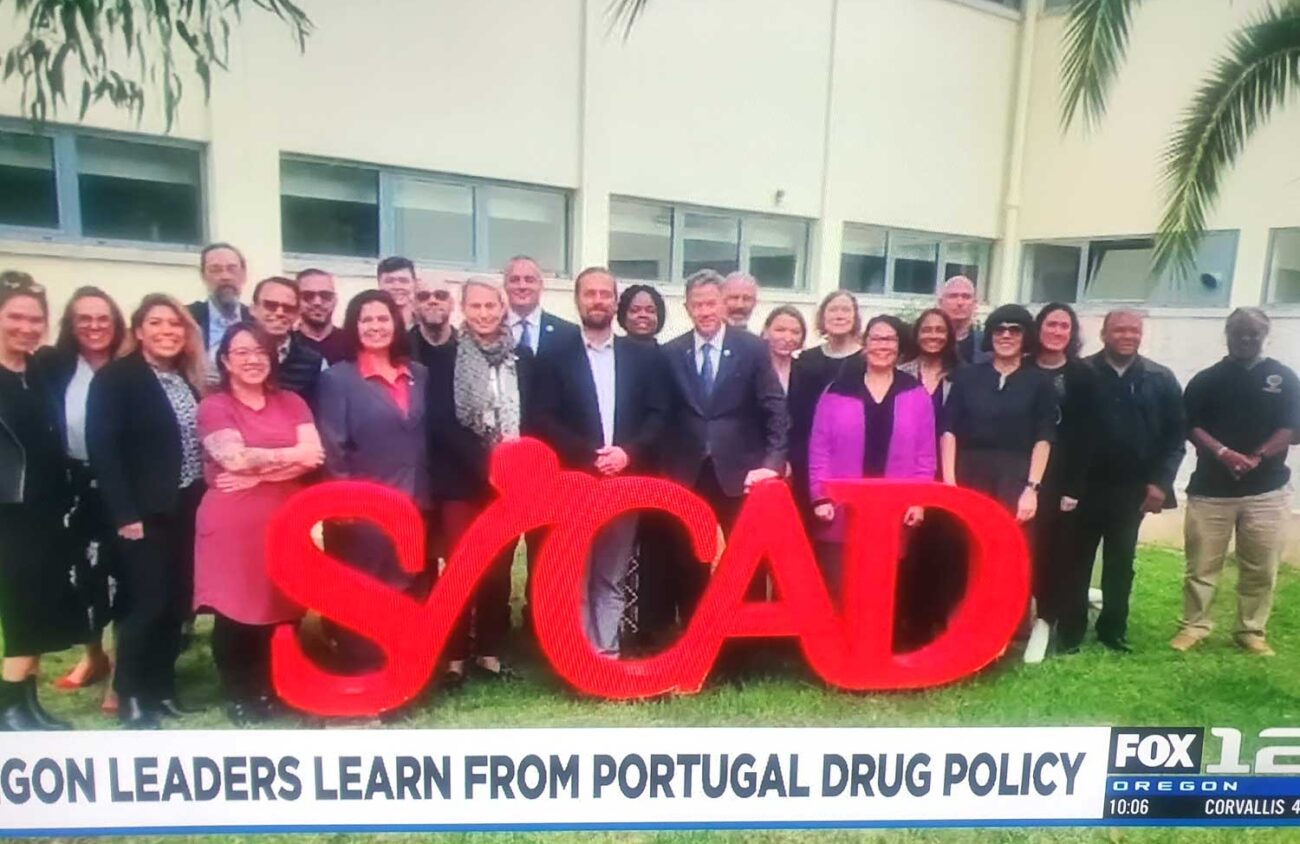I went to Portugal on a Measure 110 fact finding tour. I was one of three people going from Lane County: State Sen. Floyd Prozanski, Paul Solomon of Sponsors, and me representing one of three of Lane County’s Measure 110-funded Behavioral Health Resource Networks, which are composed of frontline, both new and established, low-barrier, harm reduction and outpatient treatment providers.
In addition, I represented substance use disorder providers of color, who also went to Portugal. There have been long standing health disparities in practices: White people get treatment, Black people get jail and no treatment for the same substance use symptoms.
People “self-medicate” their traumas using substances, because they can’t access therapy. People of color, correctly raising issues around racialized trauma in treatment, were routinely discharged for “non-compliance” or raising “non-recovery, outside issues.” Measure 110 addresses this by directing funding services to populations most affected by the “War on Drugs.” I was interested in how Portugal addressed racial disparities as well.
Portugal’s move to decriminalize possession of small amounts for personal use, and seeing all people with addictions as patients, rather than criminals, was driven by family members of prominent citizens fatally overdosing. Certainly, a situation that existed in Oregon for my entire career here.
Forty years ago I moved from Los Angeles to train the addictions workforce for the state. In one Drug 101 (Basic Pharmacology) training, the son of a former high state official was nodding off in the training from heroin, not boredom. I was told, while he was kept away from clients, he was allowed to be employed as a personal favor.
Officers of the court in Eugene have wrecked government vehicles under the influence, one even requiring a breathalyzer to start the vehicle while on the job. In Portland, even though police videotaped inner city drug transactions involving white suburban buyers, they only arrest the Black drug dealers, not the buyers who are also breaking the law. The common thread, of course, is money and race.
When Nancy Reagan was saying “Just Say No,” 80 percent of illegal drug users were white males making in excess of $50,000 in income. White women, another 13 percent. Seven percent were ethnic minorities, 3 percent of them Black. Guess who was doing jail time?
Today, according to Columbia University researcher Carl Hart, there are currently 30 million illegal drug users, largely employed and housed, with over 353,000 in prison for their substance use disorder related crimes. The Wars on Drugs (over 270 years of them, nearly three centuries old) have never been waged against the majority of problem substance users.
Wealthy white drug use has always enjoyed de facto decriminalization. A modern trauma-informed, evidence-based — or community defined evidence-based (racial, sexual intersectional trauma) — patient-centered medical approach is more effective.
When Portugal passed its decriminalization package in 2000, decriminalization was but one of nearly 70 policy solutions proposed and implemented to address the addiction crisis. Portugal’s decriminalization program also included extensive public health resources to educate the population around prevention, and to engage people with addictions with necessary services, including harm reduction, treatment, shelters, employment, prevention and recovery support education. They showed reduction in key indicators after five years of continuous efforts, including 90 percent reductions in viral infections such as HIV, HBV and HCV.
By comparison, Measure 110 implements a handful of the 70 Portuguese reforms, many of the harm reduction elements were in practice before. The problems are far larger than what legal cannabis money can address. Using only legal cannabis funding, while legal tobacco, alcohol, pharmaceuticals — as well as illegal drugs, not to mention gambling and cyber addiction — compounds the problems. Major portions of the American gross domestic product are devoted to promoting addictive products and services, as compared to the public health infrastructure attempting to reduce addiction related problems.
Ethnic minorities who were untreated and incarcerated for addiction related crimes are receiving 110-funded housing, treatment and employment readiness, after long being neglected. That’s a harm reduction policy success. Harm reduction is not simply needle exchange, naloxone distribution and overdose reversals; it’s also making the system less toxic and more medically responsive.
Those who claim that Measure 110 is a failure, after 1.5 years of funding, obviously neither talk to minority individual and program success stories, nor understand that medical science-based efforts take time to succeed. Almost 300 years of drug wars have failed. Now there are calls in Oregon for recriminalization, driven by public drug use, and for diverting and distributing scarce 110 funds to counties and cities whose deliberate neglect has historically contributed to the health disparities.
The Portuguese infrastructure does utilize non-governmental organizations and first responders in education and ways we don’t here, but could. There are opportunities to improve on the Portuguese model, using traditions and innovations native to this continent. Let us stay and expand the harm reduction course.
